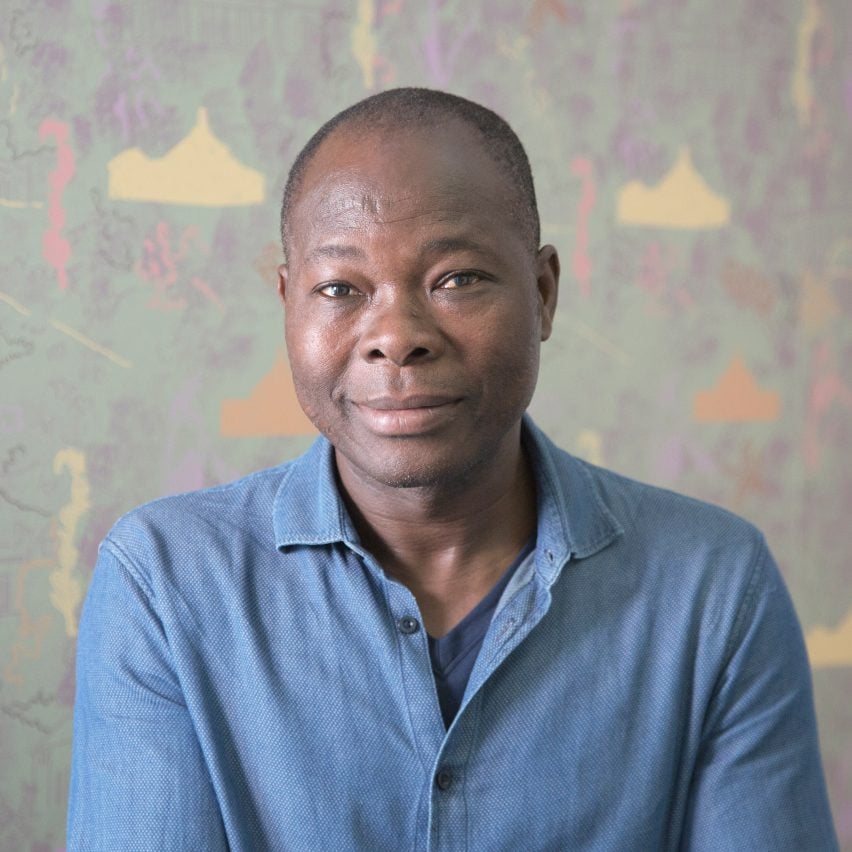Diébédo Francis Kéré explains three key projects in exclusive Dezeen videos
Burkinabè architect Diébédo Francis Kéré, who won the Pritzker Architecture Prize earlier this week, explains the thinking behind his Gando school, Serpentine Pavilion and the Burkina Faso parliament in this trio of exclusive videos filmed by Dezeen.
Kéré, who is the first African and Black architect to win the Pritzker, was interviewed by Dezeen in London following the creation of the Serpentine Pavilion in 2017.
In the first video, Kéré explained how the form of the pavilion's canopy was informed by a tree in the village of Gando, Burkina Faso, where he grew up.

"The pavilion that I was commissioned to do is inspired by a tree," he explained in the video. "Where I come from in Burkina Faso, a tree is often a public space. It can be a kindergarten, it can be a market – a gathering place for everyone."
The timber canopy funnelled water to the centre of the pavilion, while it was wrapped in wooden blocks that were coloured indigo blue.
"Blue is so important in my culture," he said. "It is a colour of celebration."
"If you had an important date in my village in pastimes, there was one piece of clothing everyone was going to ask for. So when I got the commission for the pavilion here in London I said: I am going to wear by best dress, my best colour, and it is blue."
One of Kéré's first projects was a school in his home village
In the second video, Kéré revealed how a school built for his home village kicked off his career.
Designed in 2001, while he was still studying architecture in Germany, the building represents many of the ideals of climate-appropriate architecture of his future work.
"[The aim was to create a building that responded the best to the need of the climate and the need of the people, using the most available material," he told Dezeen.
"[We created] a well-ventilated structure, which is working without any artificial or mechanic climate control,"
Largely built from clay, Kéré described the school as a "modern building that is not westernised, and not a traditional African building".
He designed a new parliament for Burkina Faso
Alongside these two built works, Kéré explained his design for the Burkina Faso parliament in the third video.
He described how the design "responds to needs of the people" and would be "more than just a simple parliament building".
Designed to replace the former parliament that was set ablaze during the country's revolution in 2014, the new seat of government would be a six-storey high pyramid.
"I was lucky to be called to think of how to design a [new parliament building] that responds to Burkina Faso and the needs of the people," said Kéré.
"I wanted to create this public space with everything," Kéré added. "We have a garden around it, we have the pyramid which is elevated, we have a cornfield on top. It is more than just a simple parliament building."
To mark Kéré winning this year's Pritzker Architecture Prize, considered architecture's most significant lifetime achievement award, we rounded up 10 of his key projects.